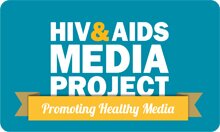Prevention of Mother-to-Child Transmission (PMTCT)
 Transmission of HIV from mother-to-child (also known as vertical transmission) can be virtually eliminated if a PMTCT regimen is followed.
Transmission of HIV from mother-to-child (also known as vertical transmission) can be virtually eliminated if a PMTCT regimen is followed.
Without PMTCT there is up to 35% chance that a mother will pass HIV to her baby. Following a PMTCT regimen reduces this chance to a mere 3.5%.
South Africa's latest PMTCT guidelines state divide the PMTCT programme into three phases:
Antenatal care ---during pregnancy
During this stage of the PMTCT process HIV-positive mothers-to-be are identified through HIV screening.
All HIV-positive women attending public clinics then have to undergo a CD4 count, HIV clinical staging, testing for TB and STIs and be given either antiretroviral prophylaxis or starts antiretroviral treatment. The route taken depends mainly on the mother's CD4 results:
CD4count is below 350 = lifelong ART.
CD4 count is above 350 = antiretroviral prophylaxis with Zidovudine (AZT)
Labour and delivery
During labour and delivery Women on antiretroviral prophalyxis are given AZT at 3 hour intervals and a single dose of Nevirapine (NVP).
Women on ART continue to take ART throughout pregnancy and labour and delivery as normal.
Transmission of HIV from mother to infant during delivery and labour is increased by prolonged rupture of membranes (prolonged bleeding), instruments being used to assist in delvery, episiotomy (surgically cutting the area between the vulva and the anus to prevent tearing) and prematurity.
Care is therefore taken to use safe delivery techniques.
Postnatal care ---after labour and delivery
Post delivery, a single dose of Tenofovir (TDF) and Emtracitabine (FTC) is administered to women being treated with antiretroviral prophylaxis.
Women on ART continue their treatment regimen as normal.
All infants are given a dose NVP daily up until the mother stops breastfeeding. Until the infant's HIV-status is determined it is also given Cotrimoxazole (an antibiotic treatment that prevents bacteria from reproducing) to prevent infections such as bacterial pneumonia and diarrhoea.
Testing at risk infants
A qualitative PCR test is done on the infant 6 weeks after birth to determine HIV-status.
A PCR test is classed as a virologic test. This is because PCR tests look for the HI-virus itself and not the antibodies which are a response to it.
HIV antibodies are different to the actual virus. HIV antibodies are produced through a person's immune system fighting the virus, so most people who are HIV-positive get the correct result from an antibody test, unless they are in the window period.
But because mothers pass their HIV antibodies to the baby but not necessarily the virus, an antibody test might pick up the mother's HIV antibodies when the baby does not have the virus itself in its blood (is HIV-negative).
Infant feeding and PMTCT
South Africa has adopted an exclusive breastfeeding strategy; as a result the government has stopped providing free baby formula at clinics and hospitals.
Mothers are encouraged to breastfeed regardless of their HIV-status. However HIV+ mothers and their babies should take ARVs for as long as breastfeeding continues. The government advises that HIV+ mothers should breastfeed only for six months and then start introducing other foods.
Mixed feeding prior to six months is discouraged as an additional precaution against HIV transmission because it can increase the chance that baby will become infected with HIV. This is because foods other than the mother’s milk damage the baby’s gastro-intestinal system making it vulnerable to the HIV in the breast milk.
 South Africa's PMTCT guidelines.
South Africa's PMTCT guidelines.
 National Breastfeeding Week (1 - 7 August 2011) Questions and Answer Guide
National Breastfeeding Week (1 - 7 August 2011) Questions and Answer Guide
 National Breastfeeding Week: Fact Sheet (1 -7 August 2011)
National Breastfeeding Week: Fact Sheet (1 -7 August 2011)
Page last updated: 29 September 2011






